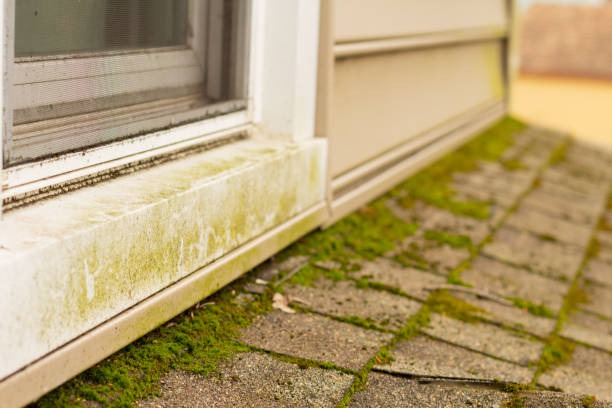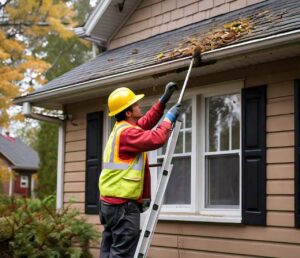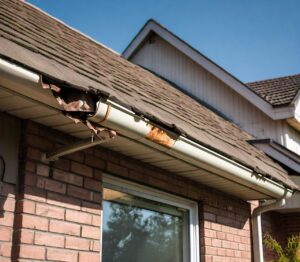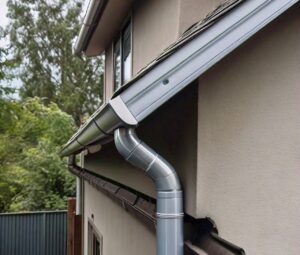Introduction
Dealing with mold and mildew on your windows is not just about keeping your home looking good. It’s also about making sure your living environment is healthy. Mold and mildew can cause health problems and damage your home if left untreated. In this guide, we’ll walk you through everything you need to know to tackle mold and mildew on your windows effectively.
What are Mold and Mildew?
Mold and mildew are types of fungi that thrive in damp environments. Mold is usually black or green and can grow on a variety of surfaces, while mildew is typically white or gray and often found on windowsills and other smooth surfaces.
Common Types of Mold Found on Windows
- Cladosporium: Often found on wood and windowsills.
- Aspergillus: Commonly appears in damp areas on walls and windows.
- Penicillium: Grows on insulation, wallpaper, and fabrics near windows.
Differences Between Mold and Mildew
While both are fungi, mold is thicker and can cause more significant damage, whereas mildew stays on the surface and is easier to clean. Mold has a fuzzy or slimy texture, while mildew looks powdery or fluffy.
Causes of Mold and Mildew on Windows
Humidity and Condensation
High humidity and condensation on windows create the perfect conditions for mold and mildew. Condensation happens when warm, moist air hits a cold windowpane.
Poor Ventilation
Without good airflow, moisture can build up, leading to mold and mildew. Rooms like bathrooms and kitchens are especially prone to this problem.
Leaking Windows and Water Intrusion
Water leaks around windows can provide a steady source of moisture, promoting mold and mildew growth.
Identifying Mold and Mildew
Visual Signs
Look for discoloration on windowsills, frames, and glass. Mold usually appears as black, green, or brown spots, while mildew looks white or gray.
Musty Odors
A musty smell is a strong sign of mold or mildew. This odor is caused by compounds released by the fungi.
Health Symptoms
Exposure to mold and mildew can cause respiratory problems, allergies, and other health issues. Symptoms include coughing, sneezing, eye irritation, and skin rashes.
Preventing Mold and Mildew on Windows
Controlling Humidity Levels
Use dehumidifiers to keep indoor humidity below 60%. In particularly damp areas, moisture absorbers can also help.
Improving Ventilation
Install exhaust fans in bathrooms and kitchens and use ceiling fans to improve airflow. Opening windows regularly can also reduce humidity.
Regular Maintenance and Inspection
Check your windows for leaks, cracks, and other damage regularly. Repair any issues promptly to prevent water from getting in. Clean your windows and frames often to remove dust and dirt.
Tools and Materials Needed for Removal
- Cleaning Solutions: Vinegar, hydrogen peroxide, bleach, or commercial mold removers.
- Protective Gear: Gloves, masks, and goggles to protect yourself from mold spores.
- Tools for Scrubbing and Cleaning: Soft brushes, sponges, and microfiber cloths.
Safety Precautions
Personal Protective Equipment (PPE)
Wear gloves, masks, and goggles to avoid direct contact with mold and inhalation of spores. Mold can cause allergic reactions and respiratory issues, so protection is crucial.
Ventilating the Area
Open windows and use fans to ventilate the area during cleaning. This helps disperse mold spores and prevents them from settling elsewhere in your home.
Proper Disposal of Contaminated Materials
Seal contaminated materials like rags and sponges in plastic bags before disposing of them to prevent the spread of mold spores.
Step-by-Step Guide to Removing Mold and Mildew
Preparing the Area
Remove any items near the affected windows and cover nearby furniture with plastic sheets to prevent the spread of mold spores during cleaning.
Applying Cleaning Solutions
Spray the moldy areas with a cleaning solution, ensuring the surface is thoroughly saturated. Let it sit for about 10-15 minutes to break down the mold.
Scrubbing and Wiping the Surface
Using a soft brush or sponge, scrub the affected areas to remove the mold. Wipe the surface with a clean, damp cloth to remove any residue.
Rinsing and Drying
Rinse the cleaned areas with water and dry them completely using a clean towel or cloth. Ensure no moisture is left, as this can lead to mold regrowth.
Using Natural Remedies for Mold Removal
Vinegar
White vinegar is a natural and effective mold killer. Spray undiluted vinegar onto the moldy area, let it sit for an hour, then wipe clean.
Baking Soda
Mix baking soda with water to create a paste. Apply it to the mold, scrub with a brush, and rinse with water. Baking soda also helps deodorize the area.
Tea Tree Oil
Mix a teaspoon of tea tree oil with a cup of water in a spray bottle. Spray the solution on the mold, let it sit, and wipe clean. Tea tree oil has antifungal properties that inhibit mold growth.
Commercial Mold Removal Products
Mold Removal Sprays
Various commercial sprays are designed specifically for mold removal. Follow the manufacturer’s instructions for the best results.
Antifungal Treatments
Antifungal treatments can be applied to prevent future mold growth. These treatments create a protective barrier on surfaces.
When to Call a Professional
If mold covers a large area or has penetrated deep into the structure, it’s best to call a professional mold remediation service. Professionals have the tools and expertise to handle severe mold infestations safely.
Dealing with Stubborn Mold and Mildew
Repeated Cleaning Techniques
For persistent mold, you may need to repeat the cleaning process several times. Ensure thorough drying between each cleaning to prevent regrowth.
Sanding and Repainting
If mold has stained or damaged the paint, sanding and repainting may be necessary. Use mold-resistant paint to prevent future issues.
Replacing Window Components
In severe cases, you may need to replace window components such as sills, frames, or even the entire window to completely eradicate mold.
Post-Removal Care and Maintenance
Keeping Windows Dry
Wipe down windows regularly to remove condensation. Use moisture absorbers on windowsills to capture excess moisture.
Routine Cleaning Schedule
Establish a regular cleaning schedule for your windows. Regular cleaning prevents mold buildup and helps maintain a healthy environment.
Monitoring for Recurrence
Keep an eye out for any signs of mold regrowth. Address issues immediately to prevent a minor problem from becoming a major one.
Addressing Mold and Mildew in Window Frames and Sills
Special Considerations for Wooden Frames
Wooden frames are more susceptible to mold due to their porous nature. Use a wood-safe cleaner and ensure the wood is thoroughly dried after cleaning.
Cleaning and Sealing Techniques
Clean wooden frames with a mild detergent and water. Once dry, apply a wood sealant to protect against future moisture intrusion.
Impact of Mold and Mildew on Health
Respiratory Issues
Mold spores can cause respiratory problems, especially in individuals with asthma or allergies. Symptoms include coughing, wheezing, and shortness of breath.
Allergic Reactions
Exposure to mold can trigger allergic reactions such as sneezing, runny nose, and skin rashes. People with mold allergies are particularly sensitive.
Long-Term Health Effects
Prolonged exposure to mold can lead to more severe health issues, including chronic respiratory conditions and infections. It’s crucial to address mold problems promptly.
Conclusion
Dealing with mold and mildew on windows can be a daunting task, but with the right strategies and preventive measures, you can effectively remove mold and mildew and prevent their return. By following the tips outlined in this guide, you can enjoy clean, healthy windows and a comfortable living environment for years to come. And if you’re in need of professional window cleaning services in Kitchener, Waterloo, Guelph, Cambridge, or surrounding areas, look no further than CR Cleaning Pros. Our experienced team is dedicated to providing top-notch cleaning services to ensure your windows are sparkling clean and free of mold and mildew. Contact us today for to get a free quote.
FAQs
Can mold and mildew on windows affect my health?
Yes, exposure to mold and mildew can cause respiratory issues, allergic reactions, and other health problems. It’s important to address mold promptly to minimize health risks.
How often should I clean my windows to prevent mold?
It’s advisable to clean your windows at least once a month, especially in areas with high humidity or poor ventilation. Regular cleaning helps prevent mold buildup.
Are there any eco-friendly ways to remove mold and mildew?
Yes, natural remedies like vinegar, baking soda, and tea tree oil are effective and eco-friendly options for removing mold and mildew.
What should I do if the mold keeps coming back?
If mold keeps returning, it may indicate an underlying issue such as a leak or persistent humidity. Address the root cause and consider seeking professional help for persistent mold problems.
Can mold and mildew damage my windows permanently?
If left untreated, mold and mildew can cause permanent damage to windows, especially wooden frames. Timely cleaning and maintenance are essential to prevent lasting damage.




